Discover Value.
Discover Synergen™ ME.
Food for Tomorrow
and Beyond?
Nature gives us a lot
Our daily challenge is to use it sustainably
About 10% of the Earth’s surface is suitable for efficient agricultural use. This limited area has to feed the world’s population—which is constantly growing by about 80 million people each year. That is only possible if harvests increase consistently. How can we achieve this? We visited a farmer and spoke to him about the challenges he faces every day in his fields.
slightly increasing land use
Crop loss
Wheat
Smartweed loves wheat. Same goes for cutworms. Without agrochemicals and tank-mix adjuvants we could lose up to 50% of yields to them.
Journal of Agricultural Science 144 (2006): 31–43.
Without the use of herbicides, massive crop loss would result due to pests, diseases and weeds. Current crop protection can reduce potential wheat crop loss by about:
Crop loss
Rice
Insects, weeds and diseases in rice fields can cause damage that leads to crop loss of up to 77%.
Journal of Agricultural Science 144 (2006): 31–43.
Without the use of herbicides, massive crop loss would result due to pests, diseases and weeds. Current crop protection can reduce potential rice crop loss by about:
Crop loss
Potato
Diseases like Potato Late Blight can be minimized dramatically by using an efficient working agrochemical combined with adjuvants.
Journal of Agricultural Science 144 (2006): 31–43.
Without the use of herbicides, massive crop loss would result due to pests, diseases and weeds. Current crop protection can reduce potential potato crop loss by about:
Crop loss
Soy
Asian Rust is threatening one of the world’s most important crops. We think soy is delicious. So we protect it.
Journal of Agricultural Science 144 (2006): 31–43.
Without the use of herbicides, massive crop loss would result due to pests, diseases and weeds. Current crop protection can reduce potential crop loss of soy by about:
Crop loss
Corn
Wind, rain, sunlight, pests—crops are exposed to numerous conditions in the field. Tank-mix adjuvants help agrochemicals to work more effectively in reducing crop loss.
Journal of Agricultural Science144 (2006): 31–43.
Without the use of herbicides, massive crop loss would result due to pests, diseases and weeds. Current crop protection can reduce potential crop loss of corn by about:
Visit the Clariant Crop Solutions Lab
Taking Crop Protection
to a higher level
»The Synergen™ product range is giving the entire crop-spraying sector a new quality by providing sustainable tools for increasing crop yields. As tank-mix adjuvants, they improve spray behavior and foliar uptake of active substances, enabling better control of pests.«

Peter Mansour, Lab Technician
Crop Solutions Research & Development
»Our newest addition is the Synergen™ ME product family, which combines five different adjuvant-based modes of action for boosting the effectiveness of herbicides and plant growth regulators.«
Interview with Prof. Dr. Peter Baur,
Head of Clariant's Crop Solutions Competence CenterThe greatest reward is maximizing the yield
The world population is growing. Agricultural areas are limited and even decreasing. Will farmers still be able to increase their yields?
They have to. People need to eat. Farmers will be able to increase their yields, as they have done since they began cultivating grains 10,000 years ago. Enhanced techniques, new crop varieties and recent agricultural chemical developments have helped farmers advance. But agricultural chemistry will need to be reassessed.Why is a reassessment important?
The use of pesticides and herbicides is becoming more and more regulated—and rightly so, because we all want to produce sustainably. However, if farmers do not use enough of the right crop-protection products, weeds, fungi and insects will survive and start developing resistances. The old saying applies equally to these pests: »What does not kill us makes us stronger.« This will be a huge issue in the coming decades.Can you give an example?
For a long time, the herbicide glyphosate has been used around the world. More and more weeds are able to shake off anything farmers spray on them and thus continue to grow. Using increased amounts of glyphosate would not solve the problem, and it is not possible for environmental reasons. We certainly need smarter sustainable solutions.What do you have in mind?
In the Crop Solutions Competence Center at Clariant, we have developed a series of adjuvants under the brand name Synergen™. These adjuvants are biological enhancers of herbicides and pesticides and allow us to take advantage of the full potential of active substances. These additives increase effectiveness, for example, by minimizing the amount of droplets scattered by the wind (drift), by ensuring that plants are wetted more completely and that active ingredients penetrate the leaf more easily.Does Synergen™ ME counteract the growing glyphosate resistance?
We developed products for the Synergen™ ME family especially for this purpose. In Synergen™ ME, various surfactants provide optimal retention and coverage on the leaf. An additional component causes the texture of the foliar surface to swell, enabling the herbicide to penetrate it much more effectively. We offer different products, which best fit glyphosate.Are Synergen™ products harmful to the environment?
No, neither their production nor their use is harmful. All Synergen™ adjuvants are primarily produced from bio-based raw materials and are biodegradable.

Prof. Dr. Peter Baur,
Head of Clariant's Crop Solutions Competence Center
»People need to eat. Farmers will be able to increase their yields, as they have done since man began cultivating grains 10,000 years ago.«
The Synergen™ ME benefits
An ideal mixture for crop solutions
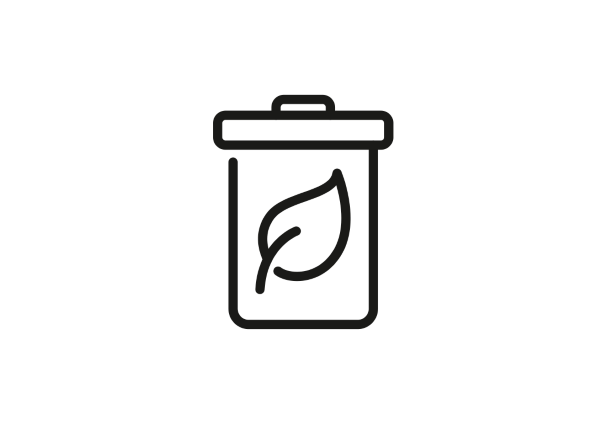
Good Biodegradability
Synergen™ ME is primarily produced from sustainable resources, is biodegradable and requires no labeling as a hazardous material.

Gentle on
plantsThe adjuvant is particularly gentle on crops and can be used with most common herbicides.
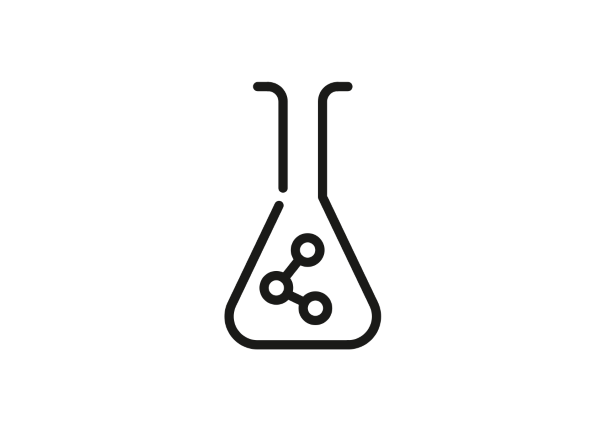
Unique
compositionIt considerably enhances the performance of the active ingredients at lower dosages.

Reduced
crop lossBoosted effectiveness of herbicides thanks to a unique combination of five key modes of action.
The Synergen™ ME product family
Eco-friendly, non-hazardous and efficient tank-mix adjuvants

Adriana Boock,
Global Marketing Segment Leader
Crop Solutions
»The Synergen™ ME family of products is the latest addition to the product range of Synergen™ tank-mix adjuvants. Synergen™ ME products are made with a special surfactant system, which creates a stable microemulsion under all practical climate conditions.«
»Synergen™ ME products are specially designed to address numerous needs of the farmer. They reduce complexity, as no separate mixing of salt enhancer or wetting agent is needed. Also, they combine and optimize herbicides for better yields and excellent weed control—all in a single product.«
Synergen™ MESYNERGISTIC MICROEMULSION
Enhanced weed control made simple:
Methylated seed oil (MSO), ammonium sulfate (AMS) and a special blend of non-ionic surfactants are the key components of Synergen™ ME. Unlike other MSO adjuvants, Synergen™ ME products form a fine emulsion in water, which is highly stable at a broad range of temperatures (-10 °C to 50°C).
The Synergen™ ME microemulsion exhibits excellent stability properties and is compatible with all kinds of agrochemical formulations.
This reduces complexity, while increasing flexibility and security for farmers when mixing components in the spray tank.The advantages of Synergen™ regarding drift, retention, water conditioning, penetration and coverage are explained below. Additional benefits include:
- prevention of active recrystallization from the spray deposit
- reduction of the amount of active ingredient lost by volatility
- suitability for low-volume spray applications
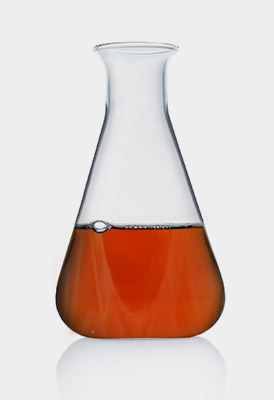
Less drift
INCREASED ACCURACY
Unwanted spray drift of agrochemical droplets can be worsened by adjuvants present within the agrochemical formulation and/or by the addition of certain tank-mix adjuvants. Synergen™ ME has been extensively tested in agrochemical spray applications. The results have shown that some Synergen™ ME products cause no increase in driftable droplets, while others may be considered efficient and effective drift retardant products. Synergen™ ME spray solutions reduce drift loss, regardless of adjuvant type and concentration, even with the presence of fertilizer salts in the spray tank.
No negative impacts on drift
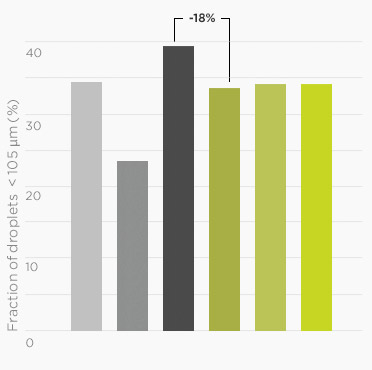
Flat fan Nozzle: XR110-02
Tap water
Synergen™ ME 0.5%
Glyphosate SL
Glyphosate SL + Synergen™ ME 0.5%
2,4 D SL
2,4 D SL + Synergen™ ME 0.5%
(Pressure: 3 bars)
Drift management
effect
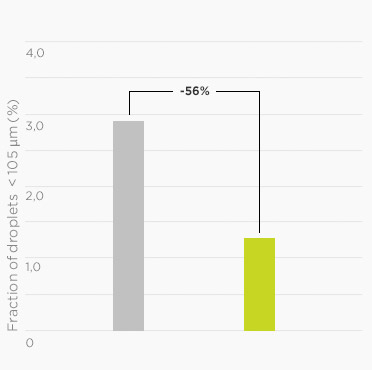
air injection nozzle: ID120-02
Tap water
Synergen™ ME 0.5%
(Pressure: 3 bars)
Independent of spray nozzle
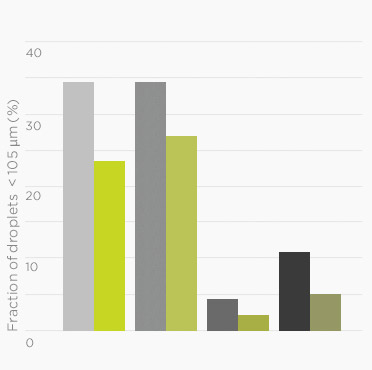
different nozzles:
XR110-02 Synergen™ ME
LU120-02 Synergen™ ME
ID120-02 Synergen™ ME
AD120-04 Synergen™ ME
XR110-02 Tap water
LU120-02 Tap water
ID120-02 Tap water
AD120-04 tap water
(Pressure: 3 bars)
Reduced bounce-off
ENHANCED ADHESION
Retention and spray droplet adhesion are key factors when aerial agrochemical spray applications are used. Retention not only depends on several features of the plant leaf surface, but also on the agrochemical formulation and the presence of tank-mix adjuvants. Agrochemical spray applications containing Synergen™ ME products exhibit excellent retention profiles that protect agrochemical spray droplets from bouncing off onto the ground.Synergen™ ME is a substantial progress for increasing formulation compatibility without sacrificing any efficiency by deactivating the active ingredient with antagonistic salts (i.e. calcium).
Perfect placement
EXCELLENT COVERAGE
Spray applications containing Synergen™ ME exhibit good retention and optimized leaf coverage for systemic herbicides, which is essential for weed-control performance.
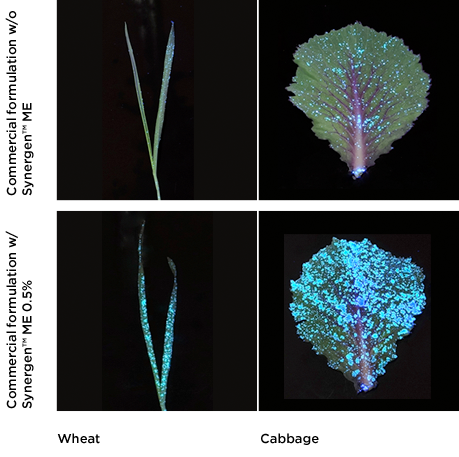
Adding water-conditioning agent?
NO LONGER NEEDED
Synergen™ ME is a substantial progress for increasing formulation compatibility without sacrificing any efficiency. Whereas MSO adjuvants, non-ionic surfactants and water-conditioning agents are added separately to the spray tank in a two- to three-step process, Synergen™ ME already contains all three components. Additional proof points include the following:
- Adding an MSO adjuvant, i.e., without a water-conditioning agent, only slightly increased the penetration of both actives.
- Using a fully adjuvanted formulation (OD formulation) is a sound solution and adds increased efficiency than mere actives and MSO adjuvants alone.
- Adding Synergen™ ME not only considerably improved the penetration levels of mesotrione and nicosulfuron, but also outperformed those formulations that include the MSO adjuvant and the fully adjuvanted OD formulation.
- Formulations using Synergen™ ME were significantly more effective thanks to an optimized combination of AMS and MSO that simultaneously protects and boosts weak acid herbicides such as mesotrione and nicosulfuron.
Cuticular penetration of Nicosulfuron
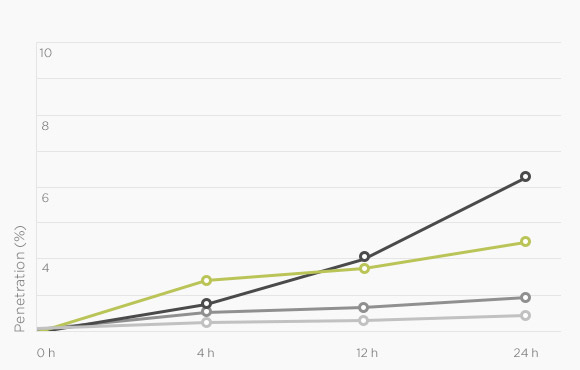
Nicosulfuron WG75
Nicosulfuron WG75 + MSO Adjuvant
Nicosulfuron OD
Nicosulfuron WG75 + Synergen™ ME (0.5%)
Cuticular penetration of mesotrione
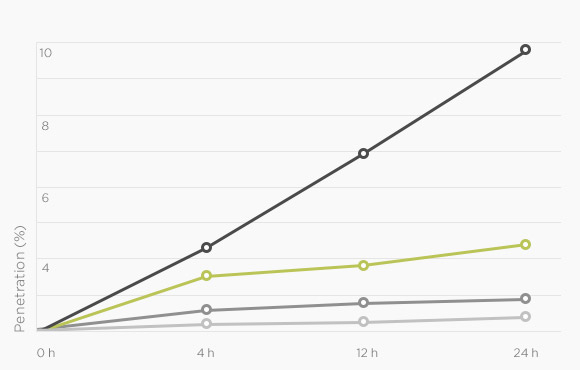
Mesotrione SC480
Mesotrione SC480 + MSO Adjuvant
Mesotrione OD
Mesotrione SC480 + Synergen™ ME (0.5%)
Getting inside the surface
AT HIGHER CONCENTRATIONS
Once water has evaporated from the spray droplet, the spray deposit is formed. Now the oil (MSO) and the non-ionic surfactants present in Synergen™ ME begin to take effect. MSO swells the waxy and scarcely permeable cuticle, allowing the herbicide to enter the weed more rapidly and at higher concentrations. A special component of the surfactant blend prevents the active from recrystallizing and helps maintain the agrochemical in its best physical state for penetration to occur over days. Additional proof points include the following:
- The penetration levels of dicamba acid into plant cuticles depend on the water quality present.
- As dicamba is an acid herbicide, the presence of antagonistic ions can have a negative impact on its performance.
- Dicamba in extremely hard water (EHW, 1300 ppm CaCO3) is bound by excess calcium ions (more than in tap water), which hinders its penetration.
- Dicamba penetration levels in EHW only reached 0.24% and 2.5% of the amount after 6 hours and 12 hours respectively.
- The addition of Synergen™ ME immediately provided significant penetration improvement of dicamba.
- Synergen™ ME was also added to EHW (0.5% w/w) and after 6 hours, the rate of penetration was 50 times faster than dicamba in EHW.
- Synergen™ ME not only deactivated the antagonistic salts in the test solutions, but the methylated oil in the products significantly enhanced the cuticular penetration of dicamba.
- The water-conditioning and penetration-enhancement effects are still present at a similar performance level compared to other MSOs or non-ionic surfactants plus 5% AMS (graphic on the right).
Cuticular penetration of Dicamba after 12 hours
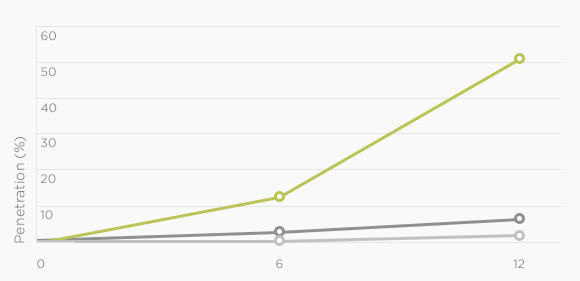
14C dicamba (Extremely hard water)
14C dicamba (Tap water)
+ Adjuvant ME
Cuticular penetration of Dicamba after 24 hours
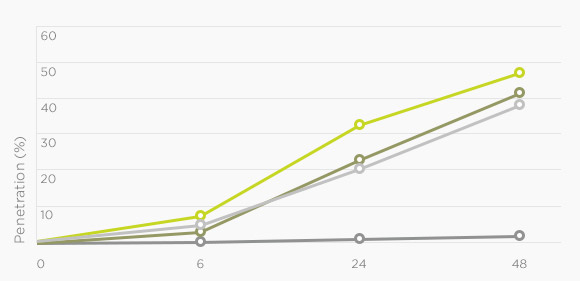
+ Adjuvant ME (0.5%)
+ NIS (0.3%) + AMS
+ MSO Adjuvant B (0.5%) + AMS
14C dicamba (extremely hard water)
Performance Check
SYNERGEN™ ME INCREASES BLACKGRASS WEED CONTROL
Synergen™ ME significantly improved the field performance of a leading sulfonylurea herbicide. In a field trial carried out on wheat, no crop tolerance issues were observed in any of the four replicates. This tank mix adjuvant was able to further enhance the fully adjuvanted sulfonylurea formulation.
Increasing Weed Control
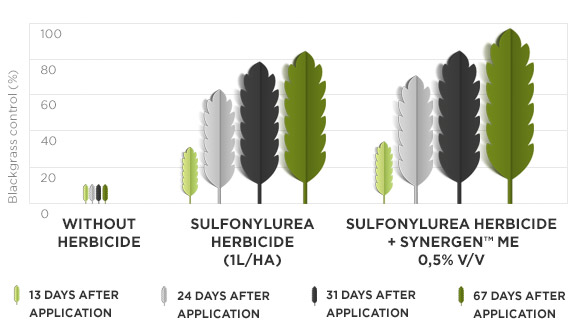
Decreasing weed population
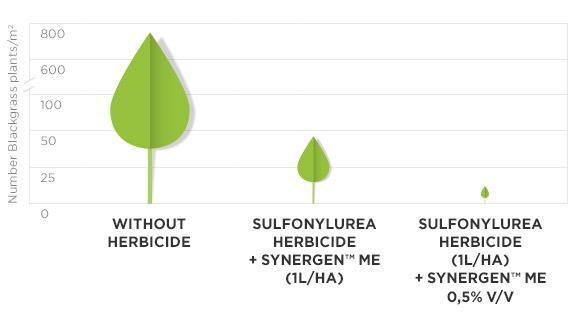
We’d really like to hear from you. Please give us a call
or use the contact form below if you have any questions or would like
more information about Synergen™.
Solutions. Synergen™ GL 5.

Synergen™ GL 5 is a polyglycerol ester based adjuvant which is derived from renewable resources. Learn more
Home. Back to main page.

Go to our homepage to learn about our company, our solutions, careers and investor relevant information. Read more


